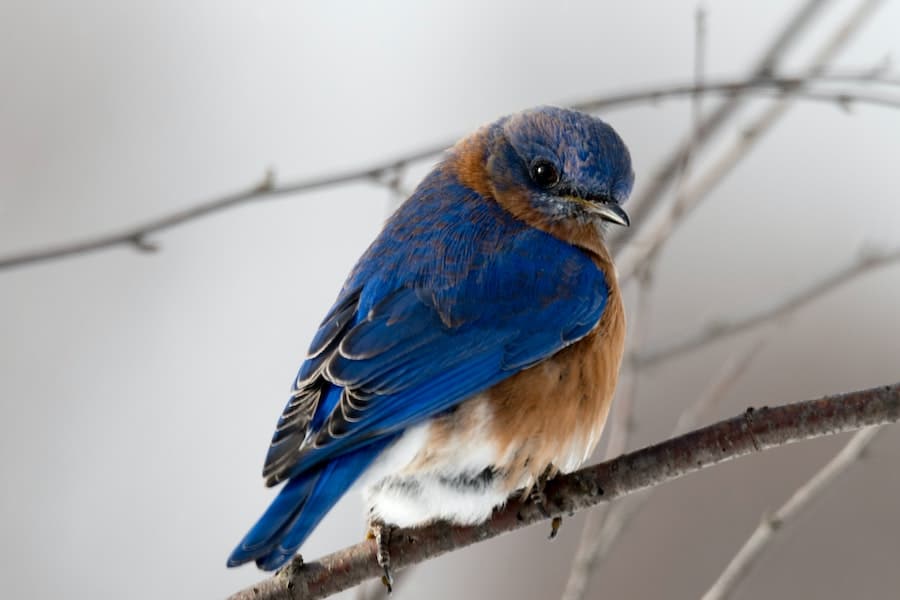Birds have long fascinated humans with their ability to soar through the skies and navigate vast distances during migration. Yet, amidst their remarkable feats, questions about their daily routines and habits persist. One such query revolves around their sleeping patterns. Do birds sleep in the same place every night, or do they choose different locations for rest? Understanding the sleep behavior of birds is not only intriguing from a scientific perspective but also sheds light on their adaptation to various environmental factors. In this article, we delve into the fascinating world of avian sleep patterns and explore whether our feathered friends exhibit consistency in their choice of roosting spots.
Do Birds Sleep In The Same Place Every Night?
Birds sometimes sleep in different places every night. While some bird species do exhibit roosting site fidelity, many others have more flexible sleeping habits. Factors such as predation threats, availability of suitable roosting spots, seasonal influences, and social behavior can all influence where birds sleep. Some birds, especially those that are migratory, may change their roosting locations depending on the time of year or environmental conditions. Additionally, social birds often roost in groups, and the dynamics within the flock can also impact their choice of sleeping sites. Therefore, while some birds may have preferred roosting locations, it is not a universal trait among all species.
Bird Sleep Patterns
Bird sleep patterns vary significantly depending on the species and their ecological niche. Here are some critical characteristics of bird sleep:
Unihemispheric sleep: Many birds, especially those vulnerable to predation, exhibit unihemispheric sleep. This means they can sleep with one half of their brain while the other half remains awake and alert. This adaptation allows them to maintain awareness of their surroundings and respond to threats.
Short sleep cycles: Birds generally have shorter sleep cycles compared to mammals. They often engage in brief periods of sleep throughout the day and night rather than one consolidated sleep period.
Daytime and nighttime sleepers: Birds can be classified as diurnal, nocturnal, or crepuscular sleepers. Diurnal birds are active during the day and sleep at night, while nocturnal birds are active at night and sleep during the day. Crepuscular birds are most active during dawn and dusk, and their sleep patterns may reflect this.
Roosting behavior: Birds have specific roosting preferences depending on the species. Some birds prefer to sleep on branches, while others may sleep in tree cavities, dense vegetation, or ground. Certain species, such as swallows and swifts, may sleep while clinging to vertical surfaces.
Group roosting: Many bird species, especially social ones, prefer to roost and sleep in groups. This provides them with safety in numbers, as it reduces the risk of predation and allows for communal warmth during colder nights.
Seasonal variations: Bird sleep patterns can be influenced by seasonal factors, such as changes in daylight hours, temperature, and food availability. Some birds may adjust their sleep patterns during migration or breeding seasons.
What Factors Influencing Bird Sleep Habits?
Several factors influence the sleep habits of birds. Understanding these factors can provide insights into why birds choose specific sleep patterns and locations. Here are some key factors:
Predatory Threats And Safety Considerations:
Birds face predation risks, especially during sleep, when they are more vulnerable. Therefore, they select roosting sites that offer protection and minimize predator exposure. Factors such as height, cover from vegetation, and proximity to water bodies can influence their choice of safe sleeping spots.
Availability Of Suitable Roosting Spots:
Birds require suitable roosting locations that provide comfort, protection, and support. This can include tree branches, tree cavities, cliffs, caves, or dense vegetation. The availability and quality of these roosting spots in their habitat influence their sleep habits.
Seasonal And Migratory Influences:
Seasonal changes, particularly during migration periods, can impact bird sleep habits. Migratory birds may adjust their sleep patterns to accommodate long flights and conserve energy during their journeys. Additionally, breeding seasons may also affect sleep habits as birds invest more time in courtship, nesting, and rearing offspring.
Social Behavior And Flock Dynamics:
Many bird species exhibit social behaviors and prefer to roost and sleep in groups. Group roosting provides safety in numbers and promotes social interaction. Flock dynamics, such as hierarchy or social bonds, can influence where birds choose to sleep and who they sleep with.
Environmental Cues And Circadian Rhythms:
Birds, like other animals, have internal circadian rhythms that regulate their sleep-wake cycles. Environmental cues, such as daylight and temperature, can influence their sleep habits. Some birds are more active during certain times of the day and adjust their sleep patterns accordingly.
Foraging Patterns And Food Availability:
Their foraging patterns and availability can also influence birds’ sleep habits. Some birds may adjust their sleep schedules based on when their food sources are most abundant or when competition for resources is lower.
The Research On Bird Roosting Behavior
Nocturnal birds, such as owls and nightjars, have been the focus of extensive research. Scientists use techniques like radio telemetry, acoustic monitoring, and nest box observations to study their roosting behavior. These studies reveal information about their choice of roosting sites, roost fidelity, and factors influencing their roost selection.
Diurnal birds, such as songbirds and raptors, have also been studied to understand their roosting behavior. Observational studies in the field, combined with tracking devices like GPS and geolocators, provide insights into their roosting patterns, daily roost site fidelity, and factors influencing their choice of roosting locations.
Researchers often employ a combination of direct observations, surveys, nest box monitoring, radio tracking, and geolocators to gather data on bird roosting behavior. These methods allow scientists to track individual birds, identify roosting locations, and monitor changes in roosting patterns over time.
Research has revealed interesting findings about bird roosting behavior. Some species exhibit high roost site fidelity, returning to the exact roosting locations consistently. Others show more flexibility, changing roosts frequently. Studies have also highlighted the importance of habitat characteristics, predator avoidance, social interactions, and environmental cues in influencing roosting behavior.
Comparative studies across different bird species help identify general patterns and variations in roosting behavior. Researchers compare body size, foraging strategies, social structure, and ecological requirements to understand how these variables influence roosting behavior within and between bird species.
Reasons For Roosting Location Changes
- Birds often change their roosting locations to minimize predation risk. Predators can learn the location of roosts and pose a threat to birds during sleep. By moving to different roosting sites, birds reduce the likelihood of being targeted by predators, thus enhancing their survival.
- Birds may alter their roosting locations in response to seasonal and environmental shifts. For example, during breeding seasons, birds may seek out specific roosting sites that offer suitable nesting conditions and proximity to food sources. In colder climates, birds may select roosts that protect them from harsh weather conditions.
- Birds that roost and sleep in groups may change their roosting locations based on social dynamics within the flock. Hierarchy, territorial disputes, or changes in flock composition can influence where birds choose to sleep. Some birds may also change roosts to facilitate social interactions or avoid conflicts with other individuals.
- Birds may modify their roosting locations to align with food availability and foraging patterns. If a particular roosting site depletes food resources, birds may move to areas with better foraging opportunities. This behavior ensures they have access to sufficient food during their waking hours.
- Changes in the habitat, such as deforestation, urbanization, or natural disturbances like wildfires, can disrupt birds’ roosting locations. If their usual roosting sites are no longer suitable or available, birds may be forced to find alternative roosts in nearby areas or entirely different habitats.
Final Words
Understanding bird sleep patterns and roosting behavior increases our appreciation of these incredible creatures. While some birds exhibit roosting site fidelity, others display flexibility in their sleeping locations—predation avoidance, seasonal changes, social dynamics, and resource availability influence where birds decide to rest. Ongoing research continues to deepen our knowledge of avian sleep habits, shedding light on their adaptation to different environments. By unraveling the complexities of bird sleep, we can better comprehend their ecological roles and contribute to conservation efforts to preserve their habitats and roosting sites. Ultimately, the diverse and fascinating world of bird sleep patterns reminds us of the remarkable diversity and adaptability of life in the avian realm.
FAQ’s
Q: Do all birds sleep at night?
A: No, not all birds sleep at night. Some bird species are nocturnal and active at night, while others are diurnal and sleep at night, like humans.
Q: How do birds sleep without falling off their perches?
A: Birds have a specialized tendon system called the “flexor tendon locking mechanism” that allows them to lock their feet onto a perch while they sleep. This mechanism helps them maintain their grip and prevents them from falling off their perches.
Q: Do birds sleep with their eyes open?
A: Some bird species, particularly those with high predation risk, may sleep with one eye open or partially open. This allows them to remain alert to potential threats while still getting some rest.








